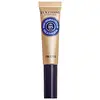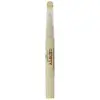What's inside
What's inside
 Key Ingredients
Key Ingredients

 Benefits
Benefits

 Concerns
Concerns

 Ingredients Side-by-side
Ingredients Side-by-side

Prunus Amygdalus Dulcis Oil
Skin ConditioningButyrospermum Parkii Oil
EmollientHelianthus Annuus Seed Oil
EmollientTrihydroxystearin
Skin ConditioningRicinus Communis Seed Oil
MaskingPersea Gratissima Oil
Skin ConditioningArgania Spinosa Kernel Oil
EmollientGlycine Soja Oil
EmollientTocopherol
AntioxidantParfum
MaskingAlpha-Isomethyl Ionone
PerfumingLinalool
PerfumingBenzyl Salicylate
PerfumingCitronellol
PerfumingCoumarin
PerfumingLimonene
PerfumingGeraniol
PerfumingBenzyl Cinnamate
PerfumingCinnamyl Alcohol
PerfumingPrunus Amygdalus Dulcis Oil, Butyrospermum Parkii Oil, Helianthus Annuus Seed Oil, Trihydroxystearin, Ricinus Communis Seed Oil, Persea Gratissima Oil, Argania Spinosa Kernel Oil, Glycine Soja Oil, Tocopherol, Parfum, Alpha-Isomethyl Ionone, Linalool, Benzyl Salicylate, Citronellol, Coumarin, Limonene, Geraniol, Benzyl Cinnamate, Cinnamyl Alcohol
Prunus Amygdalus Dulcis Oil
Skin ConditioningLanolin
EmollientOlea Europaea Fruit Oil
MaskingGlycine Soja Oil
EmollientTriticum Vulgare Germ Oil
EmollientVitis Vinifera Seed Oil
EmollientC10-30 Cholesterol/Lanosterol Esters
EmulsifyingCera Alba
EmollientSilica Silylate
EmollientCocoyl Hydrolyzed Oat Protein
CleansingTocopherol
AntioxidantParfum
MaskingHydrolyzed Vegetable Protein
Skin ConditioningCarthamus Tinctorius Seed Oil
MaskingWater
Skin ConditioningPanthenol
Skin ConditioningHexyl Cinnamal
PerfumingEquisetum Hyemale Extract
Skin ConditioningRetinyl Palmitate
Skin ConditioningTetrahexyldecyl Ascorbate
Antioxidant3-Hydroxybenzoic Acid
Skin ConditioningLinalool
PerfumingHydroxycitronellal
PerfumingLimonene
PerfumingCoumarin
PerfumingCitric Acid
BufferingPrunus Amygdalus Dulcis Oil, Lanolin, Olea Europaea Fruit Oil, Glycine Soja Oil, Triticum Vulgare Germ Oil, Vitis Vinifera Seed Oil, C10-30 Cholesterol/Lanosterol Esters, Cera Alba, Silica Silylate, Cocoyl Hydrolyzed Oat Protein, Tocopherol, Parfum, Hydrolyzed Vegetable Protein, Carthamus Tinctorius Seed Oil, Water, Panthenol, Hexyl Cinnamal, Equisetum Hyemale Extract, Retinyl Palmitate, Tetrahexyldecyl Ascorbate, 3-Hydroxybenzoic Acid, Linalool, Hydroxycitronellal, Limonene, Coumarin, Citric Acid
Alternatives
Ingredients Explained
These ingredients are found in both products.
Ingredients higher up in an ingredient list are typically present in a larger amount.
Coumarins are a group of substances found naturally in plants. There are over 1300 types of coumarins identified. It has a natural vanilla scent.
Coumarin is an identified EU known allergy, meaning it may cause an allergic reaction when applied to the skin.
In many countries, coumarin is banned as a food additive. However, it can be found in soaps, tobacco products, and some alcohol drinks.
Plants use coumarins as a chemical defense. Some plants that have coumarins include lavender, tonka beans, and yellow clovers.
Learn more about CoumarinGlycine Soja Oil comes from the soybean. Glycine Soja is native to eastern Asia.
Soybean oil is an emollient. It is rich in antioxidants and fatty acids including palmitic, stearic, oleic, and linoleic acids.
As an emollient, the fatty acids in soybean oil helps keep your skin soft and hydrated. It does so by creating a film on top that traps moisture in.
Soybean oil is also rich in vitamin E, a potent antioxidant. Vitamin E is also anti-inflammatory and provides a soothing effect.
Studies show soy may help fade hyperpigmentation from UVB. It does so by disrupting the melanin process from UVB induced skin inflammation.
This ingredient may not be malassezia folliculitis, or fungal-acne, safe.
Soybeans are rich in proteins and are part of the legume family. Foods made with soybeans include tofu, soymilk, edamame, miso, and soy sauce.
Learn more about Glycine Soja OilLimonene is a fragrance that adds scent and taste to a formulation.
It's found in the peel oil of citrus fruits and other plants such as lavender and eucalyptus. The scent of limonene is generally described as "sweet citrus".
Limonene acts as an antioxidant, meaning it helps neutralize free radicals.
When exposed to air, oxidized limonene may sensitize the skin. Because of this, limonene is often avoided by people with sensitive skin.
The term 'fragrance' is not regulated in many countries. In many cases, it is up to the brand to define this term. For instance, many brands choose to label themselves as "fragrance-free" because they are not using synthetic fragrances. However, their products may still contain ingredients such as essential oils that are considered a fragrance.
Learn more about LimoneneLinalool is a fragrance and helps add scent to products. It's derived from common plants such as cinnamon, mint, citrus, and lavender.
Like Limonene, this ingredient oxidizes when exposed to air. Oxidized linalool can cause allergies and skin sensitivity.
This ingredient has a scent that is floral, spicy tropical, and citrus-like.
Learn more about LinaloolParfum is a catch-all term for an ingredient or more that is used to give a scent to products.
Also called "fragrance", this ingredient can be a blend of hundreds of chemicals or plant oils. This means every product with "fragrance" or "parfum" in the ingredients list is a different mixture.
For instance, Habanolide is a proprietary trade name for a specific aroma chemical. When used as a fragrance ingredient in cosmetics, most aroma chemicals fall under the broad labeling category of “FRAGRANCE” or “PARFUM” according to EU and US regulations.
The term 'parfum' or 'fragrance' is not regulated in many countries. In many cases, it is up to the brand to define this term.
For instance, many brands choose to label themselves as "fragrance-free" because they are not using synthetic fragrances. However, their products may still contain ingredients such as essential oils that are considered a fragrance by INCI standards.
One example is Calendula flower extract. Calendula is an essential oil that still imparts a scent or 'fragrance'.
Depending on the blend, the ingredients in the mixture can cause allergies and sensitivities on the skin. Some ingredients that are known EU allergens include linalool and citronellol.
Parfum can also be used to mask or cover an unpleasant scent.
The bottom line is: not all fragrances/parfum/ingredients are created equally. If you are worried about fragrances, we recommend taking a closer look at an ingredient. And of course, we always recommend speaking with a professional.
Learn more about ParfumPrunus Amygdalus Dulcis Oil comes from the sweet almond, a tree native to Iran. This oil has no fragrance and is non-volatile.
Almonds contain healthy fats, vitamins, and minerals. It is a rich source of Vitamin E, a great antioxidant and skin conditioning ingredient. Sweet almond oil contains fatty acids such as linolenic acid and triglycerides.
The content of sweet almond oil makes it a great emollient; it can help soften and hydrate your skin. Emollients create a barrier over your skin to trap moisture in. Sweet almond oil has antioxidant properties.
Those with an almond allergy should be careful of this ingredient and speak with a professional about using it in your skincare.
This ingredient may not be fungal-acne safe.
Learn more about Prunus Amygdalus Dulcis OilTocopherol (also known as Vitamin E) is a common antioxidant used to help protect the skin from free-radicals and strengthen the skin barrier. It's also fat soluble - this means our skin is great at absorbing it.
Vitamin E also helps keep your natural skin lipids healthy. Your lipid skin barrier naturally consists of lipids, ceramides, and fatty acids. Vitamin E offers extra protection for your skin’s lipid barrier, keeping your skin healthy and nourished.
Another benefit is a bit of UV protection. Vitamin E helps reduce the damage caused by UVB rays. (It should not replace your sunscreen). Combining it with Vitamin C can decrease sunburned cells and hyperpigmentation after UV exposure.
You might have noticed Vitamin E + C often paired together. This is because it is great at stabilizing Vitamin C. Using the two together helps increase the effectiveness of both ingredients.
There are often claims that Vitamin E can reduce/prevent scarring, but these claims haven't been confirmed by scientific research.
Learn more about Tocopherol